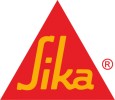Filter interviews by
Air Liquide Graduate Engineer Trainee (Get) Interview Questions and Answers
Air Liquide Graduate Engineer Trainee (Get) Interview Experiences
1 interview found

Verbal, reasoning , Quantitative analysis, Technical
(2 Questions)
- Q1. Thermodynamics,Fluid mechanics , production
- Q2. What is turbine? What is specific heat?
- Ans.
A turbine is a machine that converts the energy of a moving fluid (water, steam, gas) into mechanical energy.
Turbines are commonly used in power plants to generate electricity.
There are different types of turbines such as steam turbines, gas turbines, and hydraulic turbines.
The blades of a turbine are designed to capture the energy of the fluid and rotate the shaft connected to a generator.
Turbines are also used in air...
Interview Preparation Tips
Top trending discussions






Interview questions from similar companies

Graduate Engineer Trainee (Get) Interview Questions & Answers
Deepak Phenolicsposted on 18 Feb 2023
I applied via Campus Placement and was interviewed in Jan 2023. There were 3 interview rounds.

It was 1 hour 45 min test where 40 question from technical side and 50 questions from aptitude. My engineering was chemical engineering so in technical part there were questions from different semester subjects like fluid operation, mass transfer, thermodynamics etc.
In case of aptitude it was logical reasoning, verbal reasoning, algebra. The aptitude was quite moderate level and technical was easy in my opinion.
(8 Questions)
- Q1. Tell me about yourself
- Q2. So you did internship from Aditya birla group? In which plant you did your training. (They asked me more questions from internship only)
- Q3. What do you know by distillation?
- Ans.
Distillation is a process of separating components of a mixture based on their boiling points.
It involves heating the mixture to vaporize the component with the lowest boiling point.
The vapor is then condensed and collected as a separate liquid.
This process is commonly used in the production of alcoholic beverages, fuels, and essential oils.
Fractional distillation is a variation of distillation that is used to separate...
- Q4. What is the significance of relative volatility?
- Ans.
Relative volatility is a measure of the difference in vapor pressures of two components in a mixture.
It is used in distillation processes to determine the separation efficiency of a mixture.
Higher relative volatility indicates easier separation of components.
It is calculated as the ratio of vapor pressures of the two components.
For example, in the separation of ethanol and water, ethanol has a higher relative volatilit
- Q5. What happens when relative volatility is equal to 1. Does distillation is possible during this situation.
- Ans.
Equal relative volatility means no separation is possible in distillation.
Relative volatility is the ratio of vapor pressures of two components in a mixture.
When it is equal to 1, the vapor pressures of both components are equal.
This means they will boil and condense at the same temperature, making separation impossible.
Distillation relies on the difference in boiling points of components to separate them.
Therefore, di...
- Q6. Explain extractive distillation
- Ans.
Extractive distillation is a process used to separate two or more components from a mixture using a solvent.
It involves adding a solvent to the mixture to form two liquid phases.
The solvent selectively removes one component from the mixture, leaving the other behind.
The solvent and the removed component are then separated from each other by distillation.
Examples include separating ethanol from water using benzene as a ...
- Q7. Define types of NPSH. State the difference between the type
- Ans.
Types of NPSH and their differences
Net Positive Suction Head (NPSH) is the difference between the absolute pressure at the pump suction and the vapor pressure of the liquid being pumped.
Types of NPSH are available NPSH (NPSHa) and required NPSH (NPSHr).
NPSHa is the amount of NPSH available at the pump suction, while NPSHr is the amount of NPSH required by the pump.
The difference between NPSHa and NPSHr determines wheth...
- Q8. How to increase NPSHr when your NPSHa is more than NPSHr
- Ans.
To increase NPSHr when NPSHa is more, reduce the impeller diameter or increase the speed of the pump.
Reduce impeller diameter
Increase pump speed
Interview Preparation Tips
- Mass Transfer
- Thermodynamics
- Heat Transfer
- Fluid Mechanics
- Process equipment design
1. Clear your basics
2.Be confident and present your skills very carefully
3. Improve your fluency in English because having good knowledge but bad fluency create bad impression in front of recruiter
4. Resume building is very important. Add only those things which are true. Don't try to fill your resume with fake skills. It may create trouble during interview.

Graduate Engineer Trainee (Get) Interview Questions & Answers
Vishnu Chemicalsposted on 28 Nov 2021
I applied via Campus Placement and was interviewed before Nov 2020. There were 3 interview rounds.
Interview Questionnaire
1 Question
- Q1. What is the inverse of density?
- Ans.
The inverse of density is specific volume.
Specific volume is the reciprocal of density.
It represents the volume occupied by a unit mass of a substance.
Specific volume is commonly used in thermodynamics and fluid mechanics.
For example, the specific volume of water at 25°C and atmospheric pressure is approximately 0.001 m^3/kg.
Interview Preparation Tips

Graduate Engineer Trainee (Get) Interview Questions & Answers
Vishnu Chemicalsposted on 10 Apr 2022
I applied via Campus Placement and was interviewed before Apr 2021. There were 3 interview rounds.
Test will be conducted only if it is campus selection.
(2 Questions)
- Q1. What is the inverse of density?
- Ans.
The inverse of density is specific volume.
Specific volume is the reciprocal of density.
It represents the volume occupied by a unit mass of a substance.
Specific volume is commonly used in thermodynamics and fluid mechanics.
For example, the specific volume of water at 25°C and atmospheric pressure is approximately 0.001 m^3/kg.
- Q2. What are different modes of heat transfer?
- Ans.
Different modes of heat transfer include conduction, convection, and radiation.
Conduction: Heat transfer through direct contact between objects or substances.
Convection: Heat transfer through the movement of fluids or gases.
Radiation: Heat transfer through electromagnetic waves, such as from the sun.
Examples: Touching a hot pan (conduction), boiling water (convection), feeling the warmth of the sun (radiation).
(3 Questions)
- Q1. What is your family background?
- Q2. Tell me about yourself.
- Q3. HRs are incapable of taking interviews. They do not know proper English 🤭
- Ans. If you know hindi or telugu, then just speak. Vishnu chemical HRs are just slaves of their company and very incompetent.
Interview Preparation Tips

Graduate Engineer Trainee (Get) Interview Questions & Answers
Anupam Rasayan Indiaposted on 15 Nov 2022
I applied via Walk-in and was interviewed before Nov 2021. There were 3 interview rounds.

(3 Questions)
- Q1. Fundamentals of your technical
- Q2. Academic basic concepts, technical knowledge
- Q3. They will check your confidence how you response their questions
(3 Questions)
- Q1. Questions on projects or internship
- Q2. Questions on Extra skills,
- Q3. Core Technical questions
Interview Preparation Tips

(1 Question)
- Q1. Difference between list and tuple
- Ans.
List is mutable, tuple is immutable in Python.
List can be modified, tuple cannot be modified
List uses square brackets [], tuple uses parentheses ()
List is used for collections of items that may change, tuple is used for fixed collections
Skills evaluated in this interview

I applied via Company Website and was interviewed in Mar 2022. There were 2 interview rounds.

(2 Questions)
- Q1. About kilns pregeater elevator and belt conveyors
- Q2. Slope percentage calculation of kiln Tan value in oil analysys Material and man power handling
- Ans.
The question covers slope percentage calculation of kiln, tan value in oil analysis, and material and manpower handling.
For slope percentage calculation of kiln, we need to measure the height and length of the kiln and use the formula tan(theta) = height/length.
Tan value in oil analysis is used to determine the acidity of the oil. It is calculated by dividing the acid number by the saponification number.
Material and ma...
Interview Preparation Tips
Prepare technically
Follow dress code
Groom well

I applied via Approached by Company and was interviewed in Aug 2024. There were 2 interview rounds.
(2 Questions)
- Q1. How much Experience
- Ans.
I have 10 years of experience in software engineering, specializing in backend development and system architecture.
10 years of experience in software engineering
Specialize in backend development and system architecture
Worked on projects involving scalability and performance optimization
- Q2. Do you have any supervisor license
- Ans.
No, I do not have a supervisor license.
I do not possess a supervisor license at the moment.
I have not pursued obtaining a supervisor license in my career.
My focus has been on technical expertise rather than supervisory roles.
(2 Questions)
- Q1. How to test of motors
- Ans.
Testing of motors involves various methods to ensure functionality and performance.
Performing insulation resistance tests to check for any electrical faults
Conducting load tests to measure the motor's performance under different conditions
Checking for abnormal noise or vibrations during operation
Inspecting the motor for any physical damage or wear
Using thermography to detect overheating issues
- Q2. What is transformer safety relay's
- Ans.
Transformer safety relays are devices used to protect transformers from faults and overloads.
Transformer safety relays monitor the electrical parameters of a transformer, such as current, voltage, and temperature.
They can trip the transformer offline in case of a fault to prevent damage.
Some common types of transformer safety relays include overcurrent relays, differential relays, and temperature relays.

Assistant Manager Interview Questions & Answers
Oriental Carbon & Chemicalsposted on 5 Jul 2023

(1 Question)
- Q1. About the purchase field
(1 Question)
- Q1. Technik question about purchase
(1 Question)
- Q1. HR round asked persona question

Software Developer Interview Questions & Answers
Ecolab Digital Centerposted on 16 Mar 2024
I appeared for an interview in Feb 2024.
It will be of Medium difficulty
It's is consists of easy questions
(1 Question)
- Q1. 25 mins on coding 15 mins on aptitude 10 mins on communication
Air Liquide Interview FAQs
Tell us how to improve this page.
Air Liquide Interviews By Designations
- Air Liquide Manager Interview Questions
- Air Liquide Software Engineer Interview Questions
- Air Liquide Sales Officer Interview Questions
- Air Liquide Project Engineer Interview Questions
- Air Liquide Regional Logistics Manager Interview Questions
- Air Liquide Shift Engineer Interview Questions
- Air Liquide Area Sales Manager Interview Questions
- Air Liquide Senior Document Controller Interview Questions
- Show more
Interview Questions for Popular Designations
- Graduate Apprentice Trainee Interview Questions
- Graduate Apprenticeship Trainee Interview Questions
- Graduate Trainee Interview Questions
- Graduate Engineer Interview Questions
- Production Graduate Engineer Trainee Interview Questions
- Graduate Student Interview Questions
- Graduate Apprentice Interview Questions
- Post Graduate Engineer Trainee [pget] Interview Questions
- Show more
Interview Questions from Similar Companies
Fast track your campus placements
|
Service Engineer
24
salaries
| ₹2.2 L/yr - ₹5 L/yr |
|
Distribution Officer
20
salaries
| ₹3.1 L/yr - ₹8.5 L/yr |
|
Manager
18
salaries
| ₹15 L/yr - ₹30.7 L/yr |
|
Shift Engineer
17
salaries
| ₹5.4 L/yr - ₹9.9 L/yr |
|
Key Account Manager
16
salaries
| ₹7 L/yr - ₹14.5 L/yr |

BASF

Henkel Adhesives Technologies

Deepak Phenolics

LANXESS India Private Limited
- Home >
- Interviews >
- Air Liquide Interview Questions >
- Air Liquide Graduate Engineer Trainee (Get) Interview Questions










